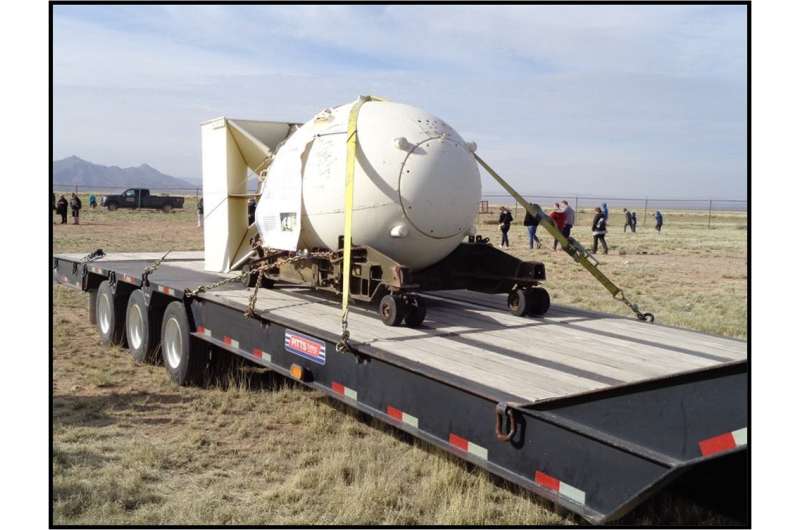It's been 75 years since Hiroshima, yet the threat of nuclear war persists

It is important to mark the solemn 75th anniversary of the first and only use of atomic weapons against cities as not only a remembrance of a tragic past event, but as a reminder of an ever-present threat that we have failed to address.
According to the , civilization-ending nuclear war—whether started by design, blunder or miscommunication—is at the highest risk of realization since 1945, as .
As a professor of disaster and emergency management who has spent time at and subsequently studied civil defense preparedness for survival during nuclear war, the 75th anniversary of the bombing of Hiroshima and Nagasaki comes at an especially depressing time.
At the current moment, we as a civilization are at a low point in our failure to reduce the risk of nuclear weapon attacks. The risks of uninformed decision-making, mishaps or seemingly rational but flawed choices made under pressure can lead nations down a rapid one-way path of nuclear destruction that we can never fully prepare for.
Weapons of mass destruction
The world forever changed on July 16, 1945, when the first atomic bomb was detonated at the . The early morning blast was the capstone of an experiment that represented the potential of scientific achievement.

Twenty-one days after the successful test blast, the decisions made to quickly use this new bomb as an unparalleled weapon represented the capability of humankind to inflict suffering onto others. As with many acts of warfare, the use of the bomb was a purposeful creation of a disaster: .
For 2020, the status of world nuclear forces, provided by the Federation of American Scientists, indicates that .
These weapons lurk in the background, and sometimes they make headlines. In 2017, threats of nuclear war were in the news again as tensions mounted when . The situation was further aggravated when U.S. President Donald Trump's words threatening nuclear war were .
Civil defense
Protecting the public requires the emergency management and homeland security branches of governments to . An example of Cold War-era Canadian civil defense efforts is the late 1960s guide. , and perhaps among the most complex actions that an emergency manager will ever need to engage in.
If a nuclear attack with a prior warning were to take place, providing pertinent information to the populace about the imminent threat, having shelter-in-place or evacuation options available, having plans appropriately tailored to a given community's needs and being able to convey the risks without creating unnecessary alarm are all needed civil defense actions.
In 1986, former Federal Emergency Management Agency (FEMA) planning specialist Wayne Blanchard asked: ""
Today's civil defense efforts remain rudimentary in comparison to the threat. A more recent FEMA fact sheet, from 2018, entitled "" raises more unanswerable questions.
In the 1950s, the United States Federal Civil Defense Administration produced a public information campaign with atomic bomb survival advice should a weapon of mass destruction attack occur. One of the products was the 1951 film, Duck and Cover, . Public information strategies have come a lot further since then; a recent campaign from Ventura County, Calif., informs residents to ""
Outpaced preparedness
While any preparedness is better than none, preparedness plans are futile for those in proximity to an atomic blast. We also know from Hiroshima and Nagasaki about the serious .
Managing the countless long-term social and economic consequences would require years of work by our best and brightest, assuming they were not already killed by the initial explosion or its after effects.
Nuclear weapons development has effectively outpaced preparedness efforts. Civil defense actions, while meaningful in their own right, are ultimately of little utility in reducing the risks realized in nuclear explosions. Any reocurring Hiroshima-like atomic bombings elsewhere would be bleak; mass death would prevail.
On this 75th anniversary of the atomic bombing of Hiroshima and Nagasaki, it remains a disappointment that the threat of nuclear weapons remains. Our only way out of this problem is to work towards abolishing them.
Provided by The Conversation
This article is republished from under a Creative Commons license. Read the .![]()



















